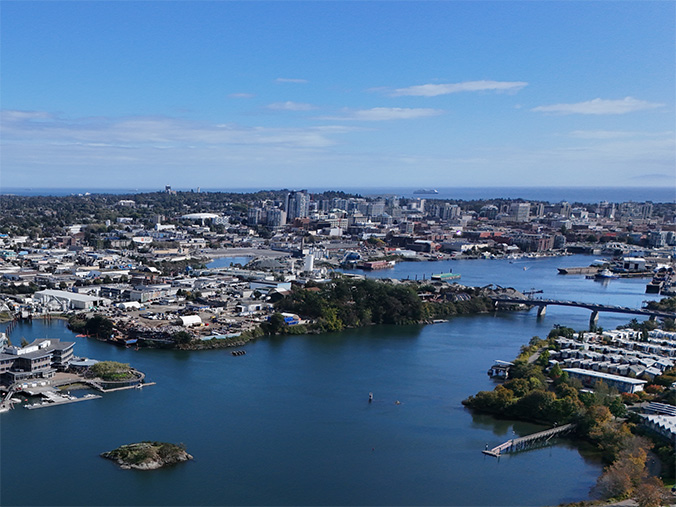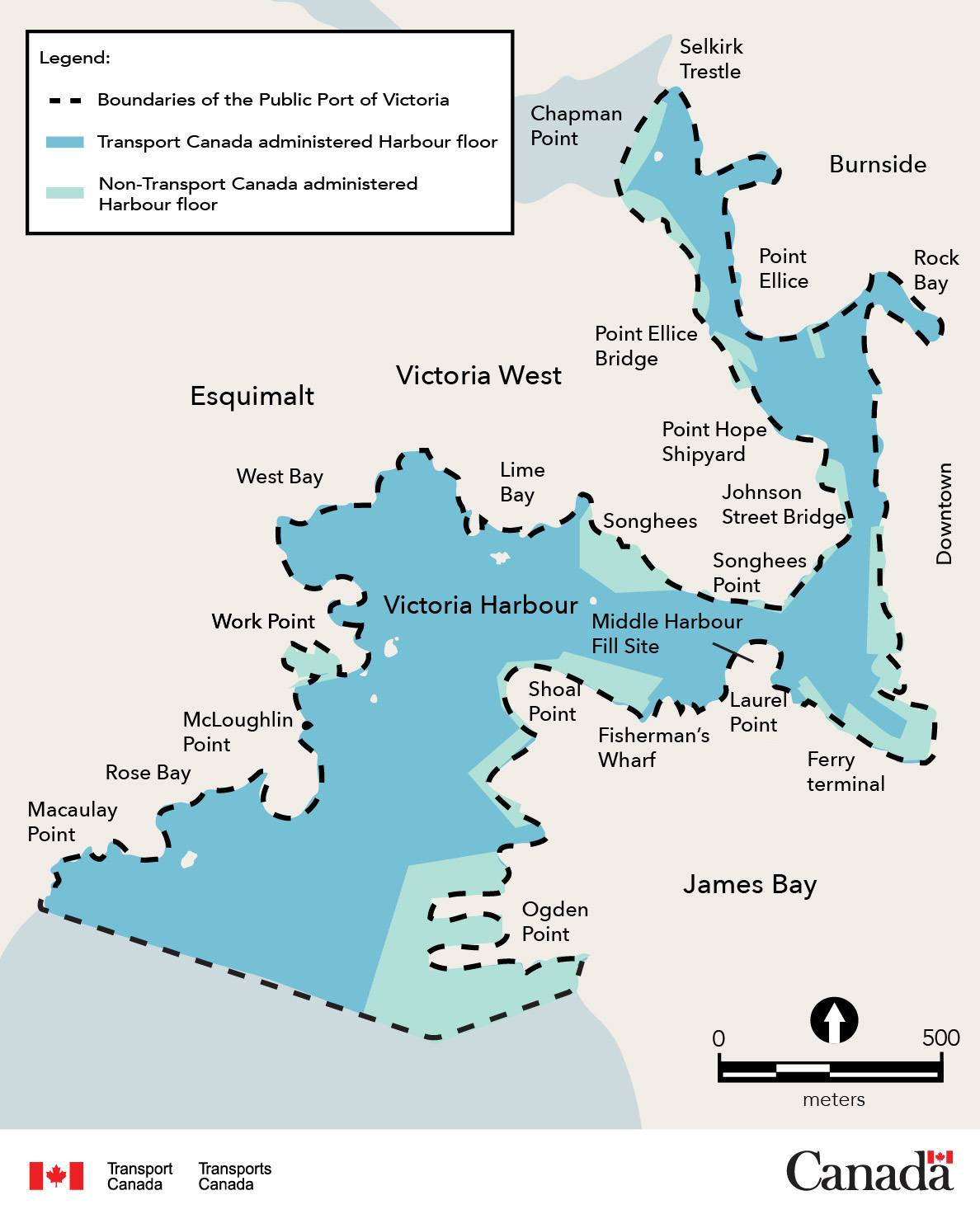Victoria Harbour has been a busy commercial and industrial harbour since the mid-1800's, with both historical and ongoing activities impacting the environmental condition of the harbour. As a designated public port and Canada’s busiest certified water airport, ongoing residential, commercial, industrial, and recreational land use can affect the harbour’s water quality and marine life.
On this page
- Overview
- Map of the Public Port of Victoria and Victoria Harbour Floor
- Protecting the environment while supporting the working harbour
- Progress to date
- The Victoria Harbour Floor Project
- Contact us
Overview

Transport Canada owns most of the seafloor in Victoria Harbour, including several beaches and submerged sediments that extend from the Ogden Point Breakwater and Macauley Point to the Selkirk Trestle. Over the past 20+ years, Transport Canada has been working to improve and protect the environmental condition of the seafloor by completing a variety of environmental activities within the harbour.
Transport Canada also assesses proposed projects within the harbour to determine how they could impact the environment and how these impacts could be managed. Transport Canada is currently developing a broad, harbour-wide plan to address historical pollution and prevent re-contaminating the harbour in the future.
Map of the Public Port of Victoria and Victoria Harbour Floor
Protecting the environment while supporting the working harbour
Transport Canada regulates all activities in Victoria Harbour under the Canada Marine Act and Public Ports and Public Port Facilities Regulations. New and proposed projects in Victoria Harbour are reviewed to make sure they won’t significantly impact the environment. These environmental reviews are conducted through an environmental protection, impact assessment, and contaminated sites perspective.
Progress to date
Transport Canada has invested over $100 million to clean up the harbour through projects including the Rock Bay Remediation Project and Middle Harbour Fill Site Remediation (also known as Laurel Point Park Remediation Project).
- In 2016, in partnership with BC Hydro, Transport Canada cleaned-up Rock Bay by removing over 200,000 tonnes of polluted upland soil and nearshore sediment and restoring upland and in-water areas. Once the remediation was complete, the uplands part of the site was transferred to the Esquimalt and Songhees Nation
- In 2019, Transport Canada worked with the City of Victoria and the Inn at Laurel Point to remediate polluted upland and sediments at the Middle Harbour Fill Site. Once completed, parts of the land were sold to the City of Victoria and to the Inn at Laurel Point
- Between 2010 and 2020, pollution levels in harbour floor sediments have dropped by around 28%.
- Pollution levels in sea life have dropped more than 75% since the 1990s
The Victoria Harbour Floor Project
The Victoria Harbour Floor Project is addressing historical and ongoing pollution, while still supporting a working harbour. Transport Canada will meet these goals by:
- developing and implementing a long-term approach to address historical pollution and keep the harbour from being re-contaminated
- collecting information on pollutant levels in sediments, water, and sea life, and monitoring the harbour floor to track improvements
- remediating highly polluted sediments to improve the environment in these areas
- working with local First Nations
- evaluating the environmental impacts of projects and activities in the harbour and, when needed, requiring other measures to protect the environment
Contact us
For more information about the Victoria Harbour Floor Project, email VicHarbourFloorProject-ProjetFondMarinduPortVic@tc.gc.ca.
If you have questions about Environmental Protection Reviews, email the Port Manager at TC.PAC.TH.PortVictoria-PortVictoria.TC@tc.gc.ca.
